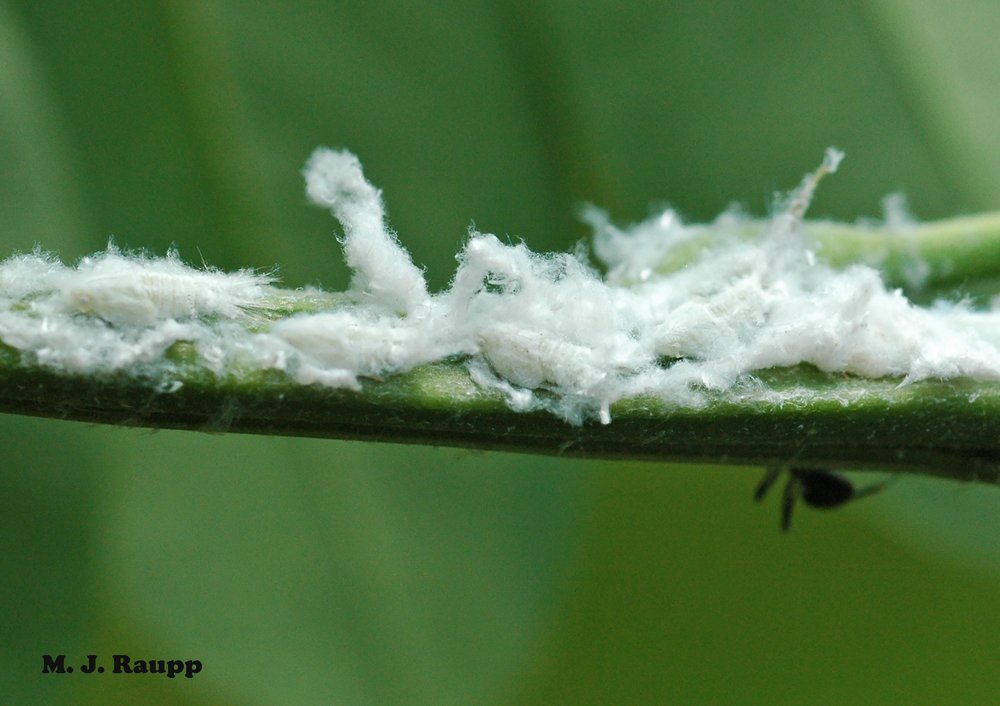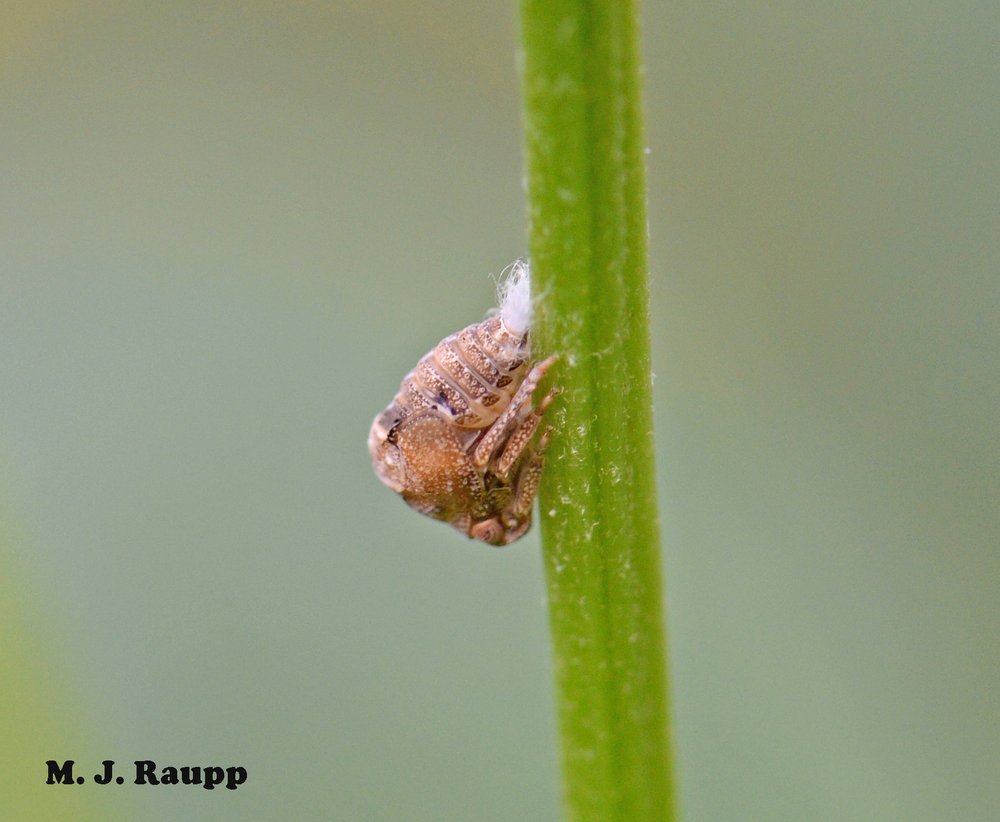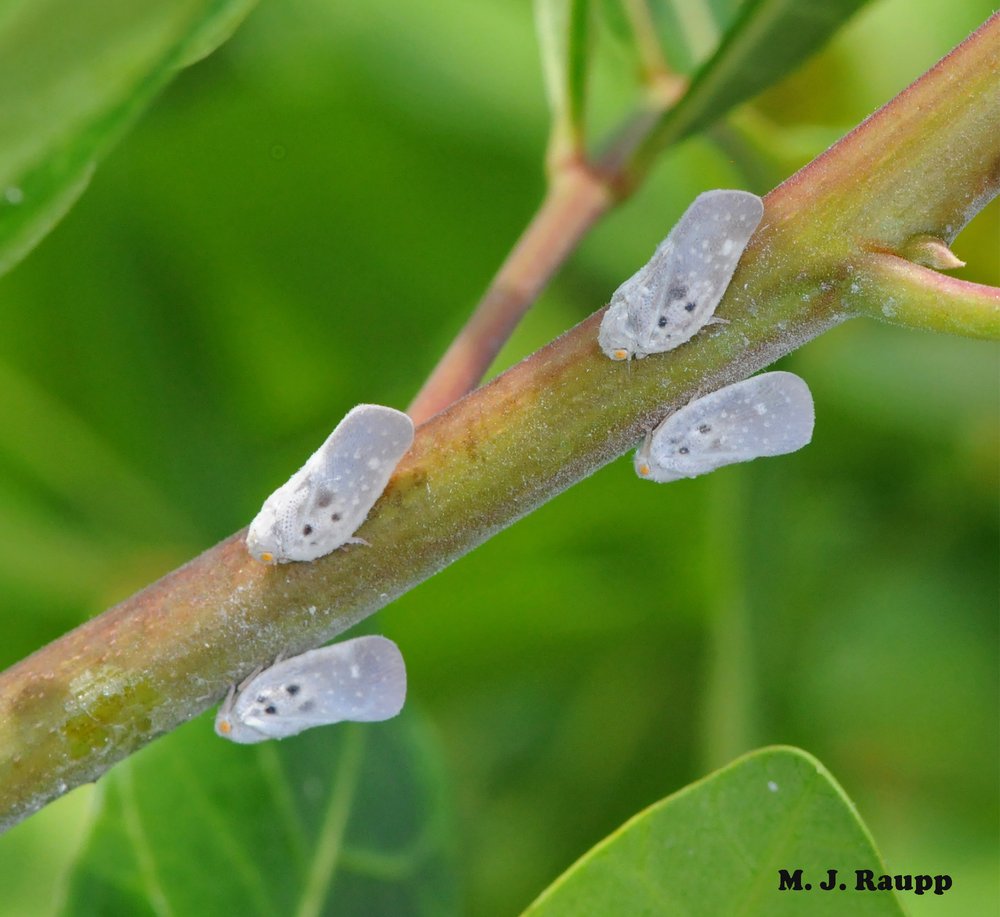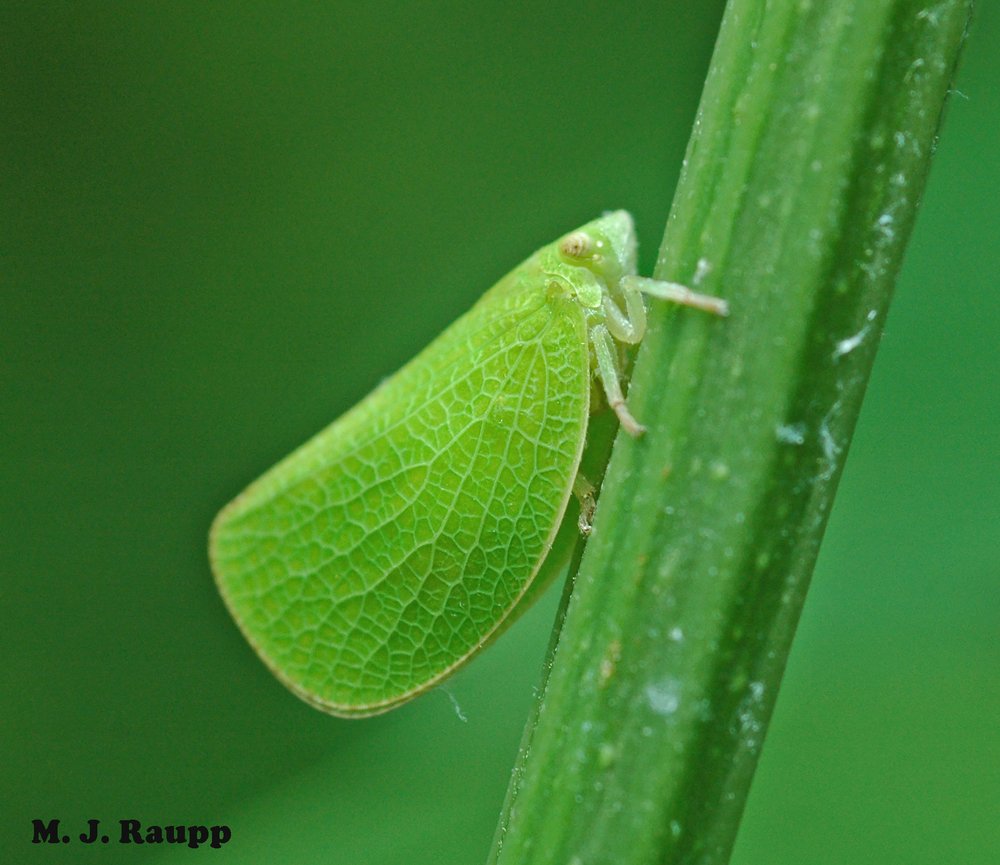
See how many flatid nymphs you can find hiding amongst their white wax on this branch.

Strange looking acanaloniid nymphs remind me of the fierce Blurrg of Mandalorian lore.
Last week we visited dastardly Japanese beetles shredding leaves of zinnias. On a follow-up visit to the flowers, I was surprised to see several stems festooned with fluffy white wax reminiscent of the mysterious substance from an aerosol can used to flock Christmas trees. Beneath the white flocking were nymphs of small sucking insects known as flatid planthoppers. Nearby a bizarre acanaloniid nymph baring a strange resemblance to a miniature Blurrg wandered about a flower stem trailing an array of waxy filaments from its rear end. These sucking insects are close relatives of other well-known wax producing sap-suckers such as boogie-woogie aphids and woolly alder aphids we met in previous episodes.
Two kinds of sap-sucking planthoppers are flocking my plants with white wax. The strange brown planthopper on top is an acanaloniid and the greenish one hiding below in white wax is a flatid nymph. When the lens gets too close the flatid hops to a leaf below and takes a stroll. The acanaloniid nymph meanders up the stem to escape a nosy bug geek.

It’s not unusual to find ranks of waxy adult citrus flatids lining stems and branches of many kinds of plants in the summertime.
Flatid and acanaloniid planthoppers feed by inserting a small beak into the vascular system of a plant and withdrawing the nutrient-laden sap into their bodies using a small hydraulic pump located in their head. As a byproduct of this feeding, they excrete a sticky substance called honeydew that attracts other insects such as wasps and ants and serves as a substrate for the growth of a fungus called sooty mold. They also secrete a pure white wax from glands lining their abdomen. The function of this wax may be to protect them from tiny parasitic wasps determined to deliver a sting and deposit eggs into their bodies. Or the wax may confuse hungry predators such as lacewing larvae and ladybugs intent on a feast, that are bamboozled when they get a mouthful of white wax instead of planthopper flesh. Whatever the purpose of the wax, it is produced in prodigious amounts by flatids and acanaloniids.

Leaf-mimicking cone-headed planthoppers are masters of disguise.
Planthopper nymphs hatched this spring from eggs inserted in the stem of a plant last year by the adult planthopper. Now the nymphs are beginning to molt and will soon become adult hoppers that will remain on our plants for the duration of summer and into autumn. Adult flatid planthoppers do not produce vast amounts of wax as they did in their youth, but their bodies are coated with a lovely bloom of grey, green, or bluish wax. Acanaloniid adults are tiny leaf mimics with myriad wing veins resembling the veins of leaves. They blend in remarkably well with the plants on which they feed. Flatids and acanaloniids are common on roses, dogwoods, locusts, privets, hollies, maples, and many herbaceous perennials and annuals. Flatid planthoppers have been reported to cause the terminals of small plants to droop due to their feeding. Females inserting large numbers of eggs into the stems of plants may also cause small branches or seedlings to wither. However, in general, flatid planthoppers cause very little injury to plants in our gardens and the use of insecticides to eliminate them is unwarranted. With the arrival of hot, humid, dog-days of summer, their holiday flocking seems to be a welcome reminder of cooler times to come.
Acknowledgements
The fact-filled articles “Histories of Anormenis septentrionalis, Metcalfa pruinosa, and Ormenoides venusta with Descriptions of Immature Stages” by S. W. Wilson and J. E. McPherson, and “Planthoppers” by Steven Frank, James Baker, and Stephen Bambara were used to prepare this episode.
No comments:
Post a Comment